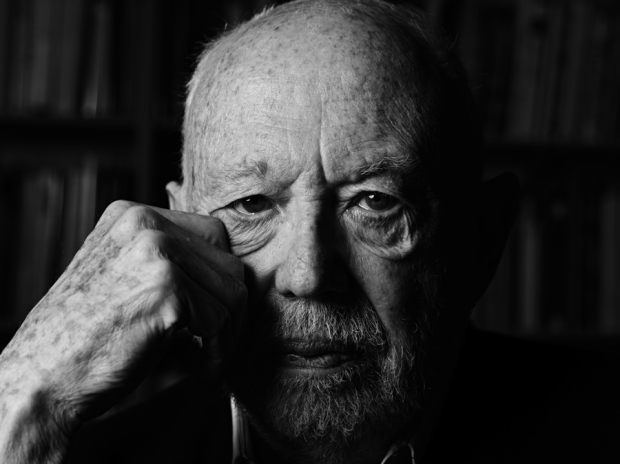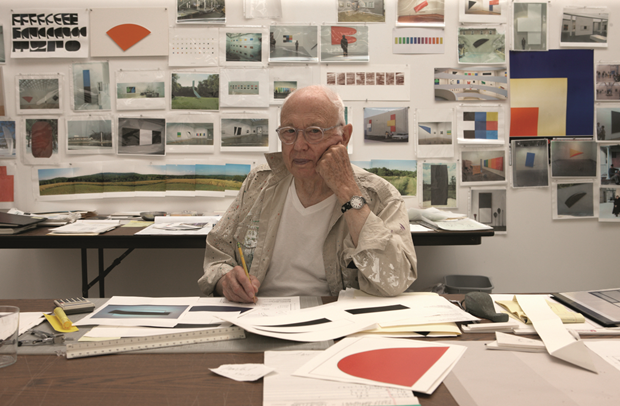
Why did Ellsworth Kelly help a toddler doodle?
Does his open-mindedness keep the 92-year-old artist creative? You might think so after reading this story
How does Ellsworth Kelly do it? The 92-year-old American artist altered the course of American abstract art during the 20th century and continues to work up until this day, producing his beguiling, angular works adored by critics, curators and gallery-goers around the world.

Some insight comes from a recently published article in The Republic, the daily newspaper for Columbus, Indiana. The paper reports that the New York composer and music teacher Timothy Dunne came to the town to speak at a conference dedicated to healthy ageing. Dunne's talk, entitled Encore! Peak Creativity Later in Life, was staged in the town's YES cinema, and took in a wide range of subjects, including the later works of architect Edward Larrabee Barnes, creator off the Walker Art Centre, and composer Igor Stravinsky, who was working on the orchestration of Bach preludes in the months before his death at the age of 88.

However, Dunne's New York neighbour is Elsworth Kelly, and it is Dunne's description of Kelly's behaviour in later life that was truly heartening. Dunne told the crowd how he and Kelly had recently stopped to chat in a coffee shop. Beside them, at a nearby table, a three-year-old child was drawing with a crayon while his parents ate lunch.
Intrigued by this infant's work, Kelly offered the child some tips on how to improve his drawing, and even made some additions himself. Dunne said the kid's parents had no idea that works by Kelly can change hands for hundreds of thousands of dollars. “The couple’s reaction seemed to be, ‘Oh, isn’t that sweet of this nice old man?’” said Dunne.

He is, of course, a sweet old man, but he's also much more than that too. The story makes for a apt rejoinder to the common criticism made of abstract art – “my kid could do that” – while reminding us of Picasso's aphorism, "Every child is an artist. The problem is how to remain an artist once we grow up." Perhaps childlike openness helps great artists remain creative, even in later life.